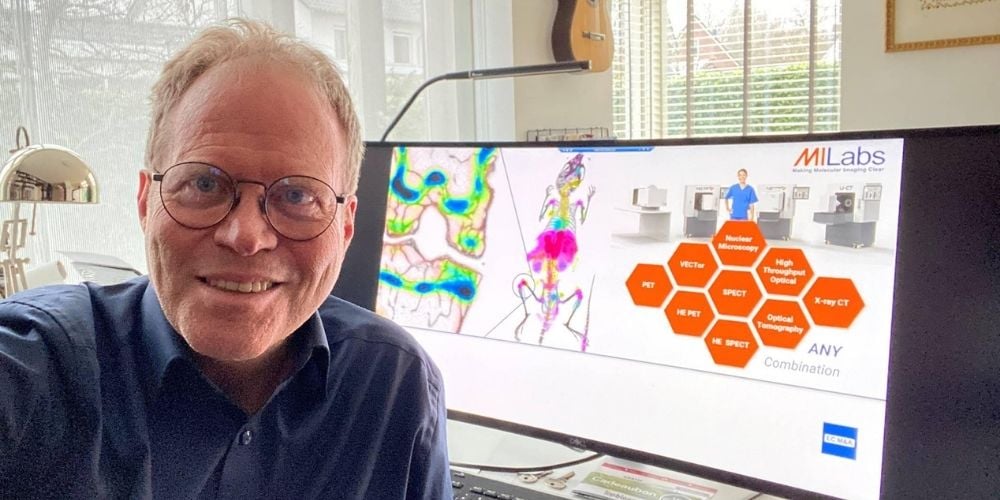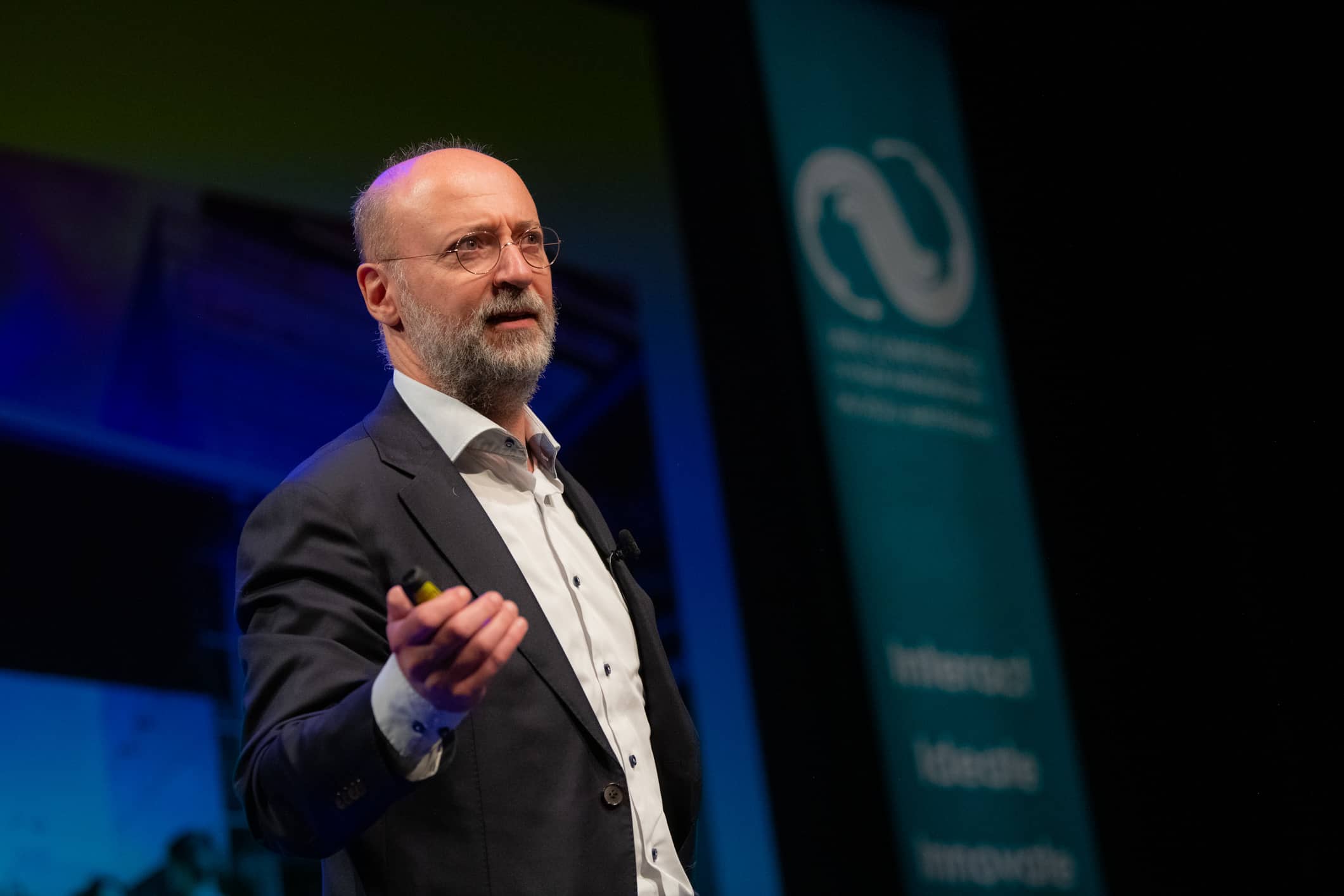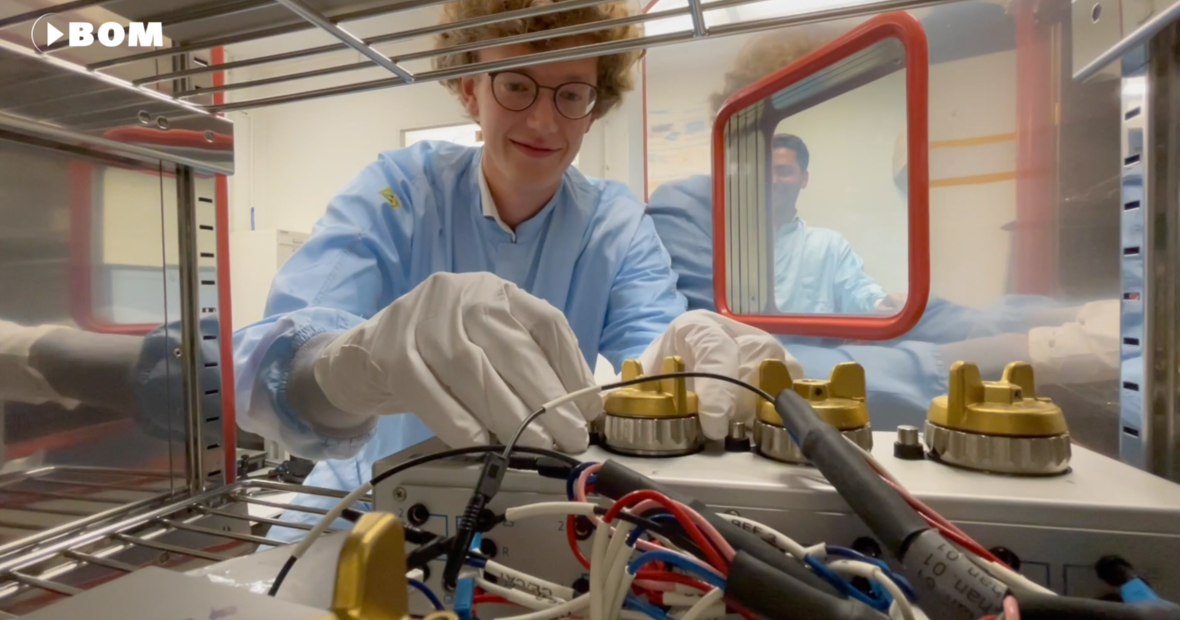
The acquisition of the Dutch company MILabs by the Japanese company Rigaku last August did not lead to any major headlines. Yet it concerns one of the biggest successes for an academic start-up in the Netherlands in recent years.
In 15 years, MILabs has grown from being a spin-off to a frontrunner in the development of the latest generation of imaging equipment for oncology research, among other things. The company has the first scanning device to its name that can perform both SPECT and PET scans simultaneously and with a high degree of image sharpness. MILabs is also behind the ‘all-in-one scanner’ for biomedical research, or a multimodal system that enables fully integrated high-quality X-ray CT, PET, SPECT and optical tomography.

Unlike a CT and MRI scan, which the general public are most familiar with, SPECT and PET scanners provide 3D images of the functioning of tissues, such as blood flow, metabolism or the workings of specific cells. Consider the heart, the brain or the inside of tumors. A compound (tracer) is injected into the patient’s bloodstream and finds its way to targeted tissues or organs where it then emits signals that cause a specific location to light up.
The images let the doctor see, for example, whether a patient has a particular disease and whether a tumor is absorbing a specific medicine. Even diseases like Parkinson’s or early onset Alzheimer’s can be shown, as well as tumors that cannot be seen anatomically (yet). In short, X-ray (CT) or magnetic resonance imaging (MRI) typically shows what the structures in the body look like and PET and SPECT scans mainly show the workings of tissues.
Two universities
MILabs is the brainchild of Freek Beekman. The company, which is named after its core activity (molecular imaging), was set up as a start-up in 2006 at the Utrecht University Medical Center. Shortly after the launch, Beekman became a professor at Delft University of Technology. The upshot of this was that both universities subsequently began to participate in Beekman’s company. Delft did so through Delft Enterprises, its investment arm; Utrecht acquired a stake in MILabs through Utrecht Holdings. “This gave us the opportunity to build the first prototypes,” says Beekman.
By that time, Beekman had already had an atypical career behind him. He had once been trained as an electrician and had worked at Philips when, at the age of 26, he started his university studies in physics as a hobby. Because Beekman did not have a sufficient level of preparatory training, he was only able to enroll after a colloquium doctum, as that arrangement is called these days. As soon as he entered the physics faculty, things moved quickly. After graduating, then subsequently earning his doctorate and being appointed as a senior lecturer in Utrecht, Beekman spent a year at the University of California (UCLA) where he shadowed Simon Cherry, an “amazing researcher” who developed the first micro-PET scanning devices there. “It was over there that I also got the idea to start developing a high-resolution SPECT.”
PET and SPECT in one
On his return to Utrecht, Beekman set up a research group at the Rudolf Magnus Institute for Neuroscience (part of the University of Utrecht) aimed at developing a scanner that could look into the brains of animals. “There was considerable interest among researchers in our project on the development of a high-quality SPECT scanner, which did not exist at that time. It was thought to be the only way to properly and noninvasively examine brains.”
The first model proved to be a success. After that, MILabs continued along the same path. Then came the high-resolution SPECT for research on humans, followed by a device called VECTor that was able to take PET and SPECT images simultaneously. Another breakthrough was the high-resolution SPECT scanner with a format capable of scanning humans (called G-SPECT).
For now, the latest innovation is the fully integrated SPECT, PET and CT imaging technology. Beekman calls this ‘all-in-one’ device “a small miracle.” The great thing about the device is that a hospital or laboratory can start with the SPECT module, for example, and then add the CT or PET modules and so on. MILabs secured two investment funds in 2016 to cover the mounting development costs. A year later, the company moved into its own premises in the Dutch town of Houten.
Steve Jobs
Which brings us to 2021, when several companies from the United States, the United Kingdom and the Benelux, among others, expressed interest in acquiring MILabs. Beekman ultimately chose Rigaku, because he saw in this technological company the best partner that could offer added value. Under the wings of Rigaku, global distribution can be scaled up and MILabs can do what it does best. Consequently, research, development and production will remain in the Netherlands and will stay under the auspices of Beekman for the time being.
By the way, the now 60-year-old professor is a bit like Steve Jobs. Not because he wears a black turtleneck or John Lennon glasses, which he does not, but because of his inventiveness and his no-nonsense attitude. Beekman has 16 patent families to his name and is constantly looking to invent “new things,” as he puts it. Although he is a de facto inventor, academic and entrepreneur, he feels most comfortable with the moniker ‘innovator.’ It is not for nothing that Beekman and his team have won several awards, such as the Commercial Innovation of the Year Award.
Also read about a new X-ray machine that is reported to be far better than previous models.
4TU: THE SPIN-OFF FROM THE SPIN-OFF
The spin-off from the spin-off series is an initiative of 4TU.Federation and Innovation Origins. Here you can read stories behind the spin-offs of the four Dutch technical universities and the Netherlands Organisation for Applied Scientific Research (TNO). In spin-offs, science and entrepreneurship come together to bring a new technology to the market. They are a driving force behind innovation in the Netherlands.







